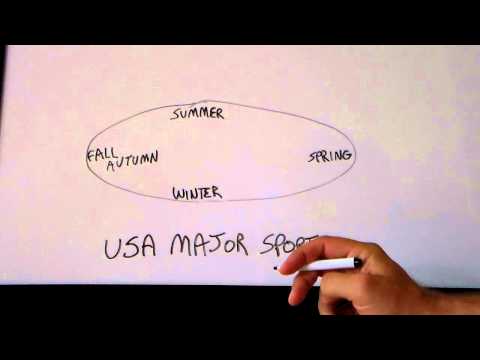How Do Sports Odds Work?
Contents
How do sports odds work? This question is often asked by novice sports bettors, and for good reason. Sports betting can be confusing, and if you don’t understand how the odds work, you’re at a disadvantage.
Checkout this video:
Introduction
In sports betting, odds represent the probability of an event occurring and the return that you will receive if you are correct. For example, say a bookmaker is offering odds of 2.00 (1/1) on a football match. This means that, for every £1 you bet, you will receive £2 back if your prediction is correct.
If the bookmaker believes that the chances of the event occurring are less than 50%, they will offer odds greater than 2.00 (e.g. 3.00, 4.00 etc.). This means that you would stand to win more than double your stake if your prediction is correct.
Conversely, if the bookmaker believes that the chances of the event occurring are greater than 50%, they will offer odds less than 2.00 (e.g. 1.50, 1.20 etc.). In this case, your potential winnings would be less than your stake if your prediction is correct.
How sports betting odds are set
The betting odds that you see on sportsbooks are set by the bookmakers. These bookmakers use algorithms to set the odds based on a number of factors. Some of these factors include public betting patterns, the teams’ performances, and weather conditions.
The overround
The bookmaker’s overround can be thought of as a margin, or a “price” for taking on the bet. The higher the overround, the worse value the bet is for the punter. For example, if you place a £10 bet on a horse at odds of 3/1 (4.0 in decimal form), and the bookie’s overround is 10%, then the bookie stands to make £1 profit on that £10 bet – no matter which horse wins. If the bookie’s margin was only 5%, then they would only stand to make 50p profit. Punters can use this information to their advantage by only placing bets with bookies who offer them good value.
The overround can also be expressed as a percentage of the true odds of an event happening. For example, if the true odds of an event are 2/1 (3.0 in decimal form), and the bookie is quoting odds of 6/4 (2.5 in decimal form), then the bookie has an overround of 150%. This means that for every £1 you bet on that event, the bookie will make 50p profit – no matter what happens.
Probability
All betting odds are set by bookmakers based on their perception of the probability of an event occurring. The bookmaker then sets the odds based on how they think people will bet.
For example, let’s say that Manchester United are playing Chelsea in a football match. The bookmaker thinks that there is a 50% chance of Manchester United winning, a 30% chance of Chelsea winning and a 20% chance of the match ending in a draw.
The bookmaker will then set the odds for each outcome as follows:
-Manchester United to win: 2.0 (i.e. you will receive $2 for every $1 you bet)
-Chelsea to win: 3.33 (i.e. you will receive $3.33 for every $1 you bet)
-Draw: 4.5 (i.e. you will receive $4.50 for every $1 you bet)
The odds for each outcome represent the bookmaker’s perceived probability of that outcome occurring and also reflect how much they think people will bet on each outcome.
How bookmakers make money
If you’ve ever wondered how bookmakers make money, the answer is actually quite simple. Bookmakers make money by setting the odds in their favor. For example, if there are two teams playing and the bookmaker thinks that team A is going to win, they will set the odds so that team B has a higher chance of winning. This way, when people bet on team B, the bookmaker will make money.
The vigorish
In order to make a profit, bookmakers need to charge a fee for each bet placed. This fee is called the vigorish (vig) and is also known as the juice, juice fee, or the take. The vig determines how much money the bookmaker will make on each bet placed, and it is calculated by dividing the amount of money wagered on each outcome by the odds of that outcome occurring. For example, if a bookmaker is taking bets on a coin toss, they may set the odds at 1.5 to 1 (or 3 to 2), which means that for every $2 bet on heads, the bookie would pay out $3 if heads comes up. In this case, the vig would be $1 ($2 wagered divided by 2).
Hedging
Hedging is a technique that is used by bookmakers in order to minimize their losses. By hedging, the bookmaker is essentially placing a wager on the opposing team or outcome in order to offset any potential losses that they may incur. For example, let’s say that Team A is playing Team B and the bookmaker has determined that the odds of Team A winning are 2:1. In order to hedge their bets, the bookmaker may place a wager on Team B winning. If Team A ends up winning the game, then the bookmaker will lose money on their initial bet; however, they will make money on their bet on Team B, offsetting any losses.
Hedging can be a complicated strategy, and it is not always effective. In some cases, a hedged bet can actually end up costing the bookmaker more money than if they had not hedged at all.
Conclusion
To sum it up, sports betting odds represent the probability of an event happening. They are usually presented in decimal or fraction form, and you can use them to calculate how much money you could win if you placed a bet. If you’re looking to get started in sports betting, make sure you understand how the odds work before placing any bets!






